11 Folk Horror Movies That Feel Like Nightmares in the Woods
If you love spine-chilling tales set in isolated wildernesses, where ancient rituals and dark folklore come to life, folk horror movies are sure to captivate your imagination. These films often feature remote forests, sinister cults, and a creeping sense of dread that builds with every passing moment. Whether it’s a cursed village or an eerie woodland, the unsettling atmosphere of these films creates a sense of isolation and terror that feels all too real.
This post may contain affiliate links, which helps keep this content free. Please read our disclosure for more info.
The Wicker Man (1973)
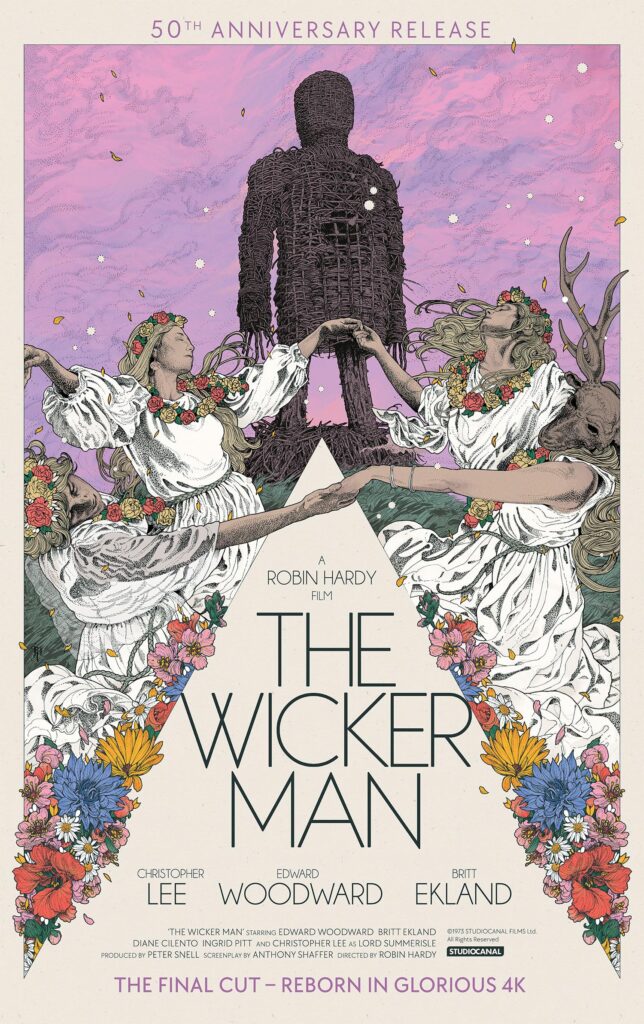
The Wicker Man stands as a classic in the folk horror genre, largely due to its eerie portrayal of isolation and pagan practices in an idyllic yet sinister rural setting. The film’s protagonist, Sergeant Howie, is sent to the remote Scottish island of Summerisle to investigate the disappearance of a young girl. Upon arrival, he is struck by the strange customs of the island’s residents, who practice a pagan belief system involving fertility rites and ancient rituals. The more Howie tries to solve the mystery, the more he becomes entangled in the island’s disturbing traditions, leading to his inevitable downfall. This isolation from the outside world, combined with the relentless, almost otherworldly practices of the villagers, creates a sense of claustrophobic dread, where the surrounding wilderness becomes both an inescapable prison and a breeding ground for ancient evils.
The movie’s growing sense of dread is fueled by the tension between the idyllic natural beauty of the island and the underlying malevolence that lurks within its society. As Howie tries to resist their influence, the residents’ commitment to their pagan rituals grows more disturbing, culminating in the film’s shocking, terrifying ending. The way the film builds this atmosphere of unease, where every conversation, every ritual, and every step deeper into the village leads to something darker, makes it a truly unsettling experience. The folk horror elements of paganism, sacrifice, and isolation are amplified by the island’s beautiful yet suffocating environment, proving that true horror can hide in plain sight, surrounded by nature.
The Witch (2015)
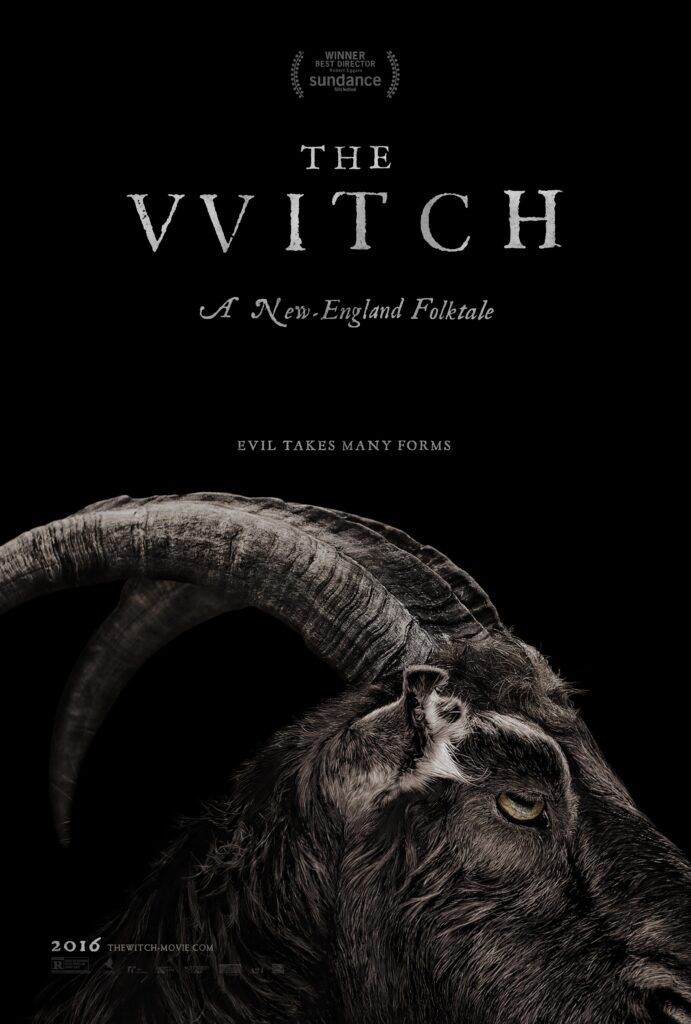
In The Witch, the setting is an isolated farm on the edge of an ominous forest, where a 17th-century Puritan family struggles with their faith and survival. The film’s plot revolves around a family exiled from their community due to a religious dispute, leaving them to fend for themselves in the wilderness. As their resources dwindle and supernatural events unfold, their isolation deepens their fears, especially when they begin to suspect that a witch is responsible for the terrible happenings around them. The stark setting of the farm, surrounded by a dark, threatening forest, mirrors the psychological unraveling of the characters, who begin to doubt each other and their beliefs. The forest in The Witch becomes a malevolent force, representing both a literal and symbolic barrier to their survival, filled with unseen threats that grow more real as the film progresses.
The atmosphere in The Witch is thick with an unsettling tension as the family’s religious paranoia takes hold, feeding into the growing fear of witches and the unknown powers lurking in the woods. Director Robert Eggers brilliantly intertwines folklore and superstition, creating an environment where every strange noise or isolated event builds into a sense of inevitable doom. As the film progresses, the sense of dread shifts from a hauntingly quiet, psychological terror to a full-blown nightmare. The sinister presence of the forest, coupled with the ancient pagan fears of witchcraft, pushes the characters to their breaking points, leaving them vulnerable to forces beyond their comprehension or control. This slow-burning sense of terror is what makes The Witch a standout in folk horror, where nature itself seems to conspire against the characters, furthering their descent into madness.
Midsommar (2019)

Midsommar takes the folk horror genre to a new level by shifting the traditional dark, isolated woods setting to an eerie, open-air environment where the horror is unveiled under the bright, unforgiving sun. A group of friends travels to a secluded Swedish village to take part in a midsummer festival, but what begins as a peaceful retreat soon turns into a nightmare. The village’s traditions are steeped in ancient, disturbing rituals that are rooted in pagan beliefs, and the friends find themselves gradually pulled into these practices, which grow darker and more violent as the days go on. The stark contrast between the bright daylight and the horrifying acts that take place in the open only heightens the sense of dread. This setting of relentless daylight creates a sense of unease, as the sun, usually associated with warmth and safety, becomes a blinding force that isolates the characters and makes their escape impossible.
The film’s unnerving atmosphere is bolstered by the growing realization that the characters are trapped in a community that is bound by a strict, yet strange, set of traditions. Unlike the typical folk horror setting of dark forests, Midsommar uses the open fields and flower-filled meadows of the Swedish countryside to build a sense of terror, where the characters can see everything happening around them, yet have no way to stop it. The horror unfolds in plain sight, allowing the characters to witness acts of violence and sacrifice without the comfort of shadows or secrecy. This ever-present exposure to the festival’s rituals, combined with the characters’ inability to leave, creates an atmosphere of dread that grows more suffocating with every passing day. In Midsommar, the growing sense of terror is not just from the isolated nature of the setting but from the eerie realization that the community’s customs are deeply ingrained, and any resistance may come at a terrifying cost.
The Ritual (2017)
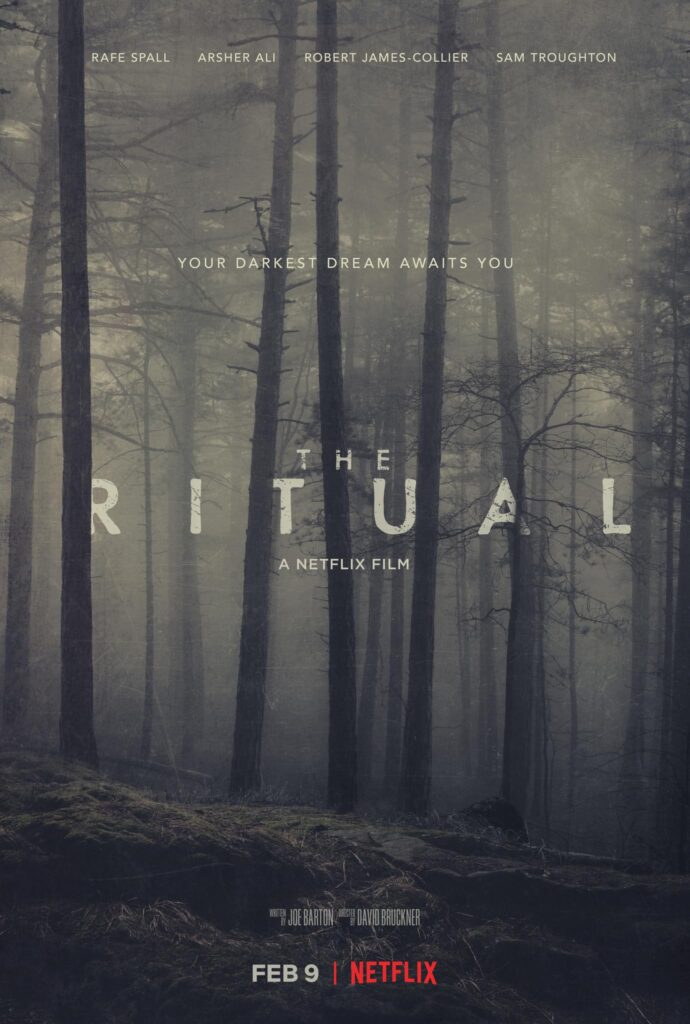
The Ritual is set in the vast, haunting forests of Sweden, where a group of friends go on a hiking trip in an effort to honor the memory of a lost friend. What was meant to be a bonding trip soon becomes a descent into terror when they find themselves lost in a labyrinthine forest that seems to be alive with malevolent energy. The forest itself is as much a character in the story as the men, with its dark, oppressive atmosphere and strange, unnatural occurrences that follow the group as they wander deeper into the wilderness. The isolation of the forest amplifies their growing sense of panic, and as they discover evidence of a dark, ancient cult, their fear turns into a fight for survival against something far older than they ever imagined. The oppressive, tangled environment of the forest creates a suffocating feeling of dread, where escape seems impossible, and something sinister lurks just out of sight.
The horror in The Ritual builds slowly as the characters realize they are not alone in the forest. The discovery of an ancient pagan site, complete with sacrificial remnants, reveals the forest’s dark history and ties to ancient, pre-Christian rituals. The forest itself becomes an entity of terror, with trees, shadows, and even the terrain shifting in unnatural ways as the men are pursued by a supernatural presence. The isolation of the forest, combined with the terrifying sense that something from ancient mythology is hunting them, creates an atmosphere of constant dread. This slow, oppressive horror in The Ritual is a perfect example of folk horror, where nature itself is the backdrop for malevolent forces that are both deeply rooted in the earth and terrifyingly close to the characters at every turn.
Kill List (2011)
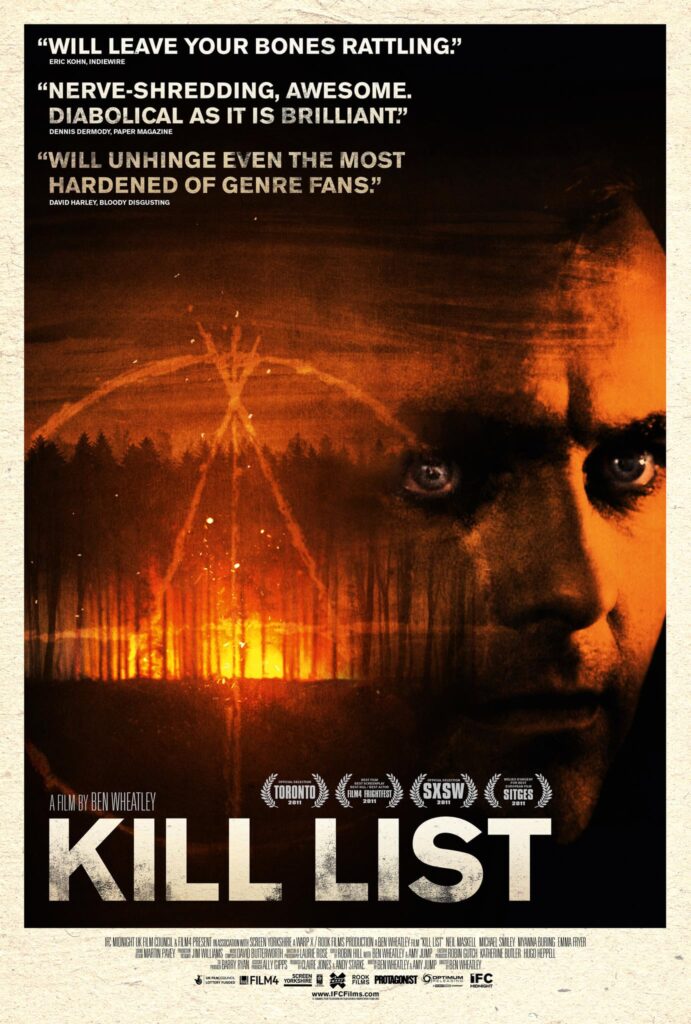
In Kill List, a former soldier is hired to complete a series of contract killings, but as he and his partner venture further into the world of crime, they uncover a chilling and mysterious cult. The film begins with a simple premise of a hitman storyline, but soon evolves into a nightmare as the protagonists are drawn into a web of occult rituals and ancient practices that stretch far beyond their understanding. The isolated rural settings, combined with the looming sense of dread, create a suffocating atmosphere as the characters start to question their reality. As they encounter strange symbols and cryptic messages, the feeling that something ancient and supernatural is at play builds, and the horror grows in intensity. The film’s folk horror elements are embedded in its exploration of a hidden society with pagan practices, and the rural setting only amplifies the growing tension as the characters are drawn into a situation where escape becomes increasingly unlikely.
The sense of dread in Kill List is built around the unsettling nature of the cult and the slow unraveling of the protagonist’s sanity as he discovers the disturbing truth. The rural locations, paired with the eerie folk elements, create an environment where the supernatural is always lurking just beneath the surface. As the character delves deeper into the world of ritual sacrifice and cultish behavior, he becomes trapped not only by his surroundings but also by his own psychological unraveling. The isolation, combined with the sinister presence of an ancient society controlling the fate of the characters, culminates in a shocking and unnerving conclusion. This blend of crime and folk horror creates a unique atmosphere where both the external threats and the internal unraveling of sanity are just as terrifying.
The Wicker Tree (2011)
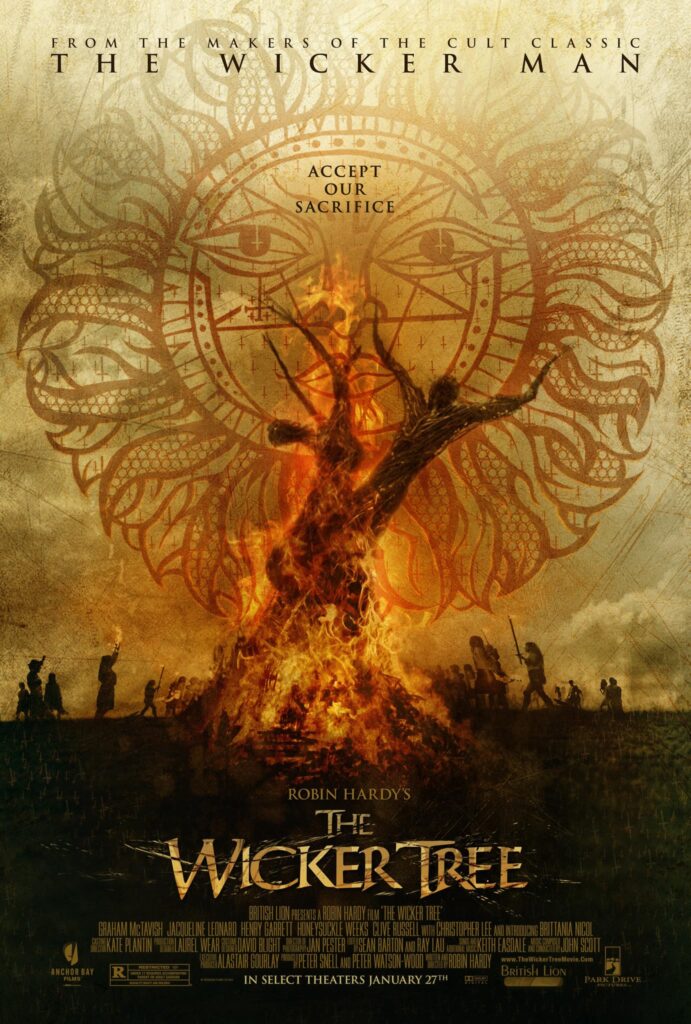
A spiritual successor to The Wicker Man, The Wicker Tree takes the folk horror genre to a more modern setting while retaining its chilling pagan themes. This film follows two evangelical Christian missionaries who arrive in a remote Scottish village to preach. The isolated rural setting and its inhabitants are eerily obsessed with ancient rituals and fertility worship. As the couple is drawn into the strange customs of the villagers, they realize that their faith and beliefs are no match for the deeply rooted pagan practices in the area. The growing tension builds as they realize they are being groomed for a ritual sacrifice, emphasizing the sense of isolation and being trapped in a culture far removed from their own.
The sense of horror in The Wicker Tree is built upon the juxtaposition between the missionaries’ pure, self-righteous faith and the dark, twisted reality of the village’s pagan culture. As they are slowly entangled in the villagers’ customs, the atmosphere of foreboding dread heightens with each passing day. The isolated village setting enhances the horror, as it becomes clear that the couple is not just in a strange place, but trapped in a hostile environment where their lives are at the mercy of ancient rites. The film’s exploration of clashing belief systems, along with the increasing sense that the missionaries are powerless to escape, evokes a sense of helplessness that is central to folk horror’s eerie appeal.
The Blood on Satan’s Claw (1971)
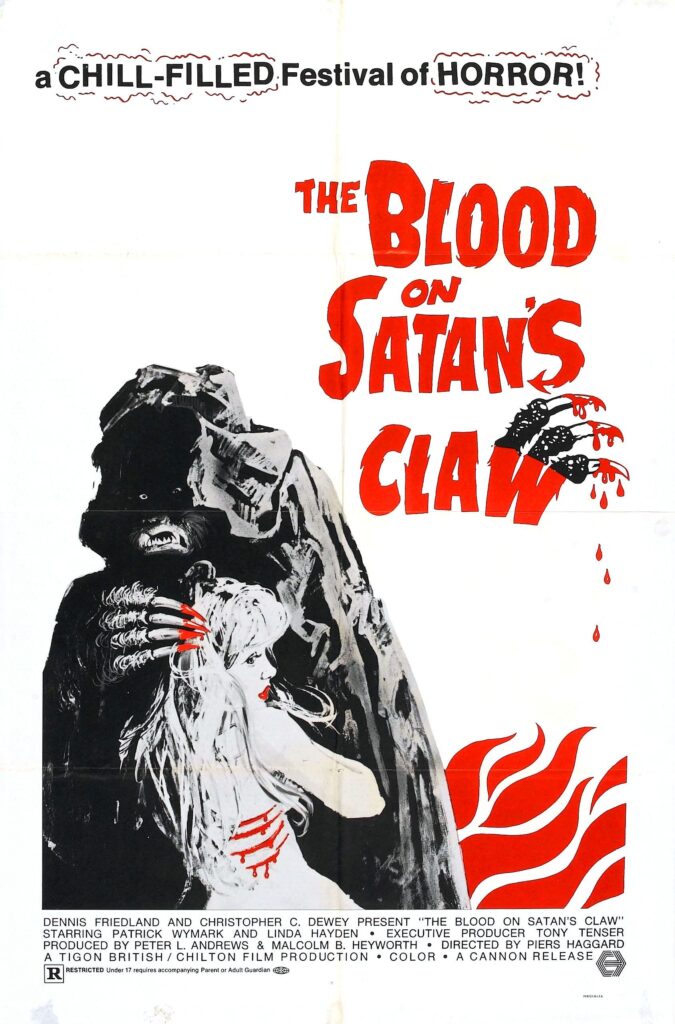
This film is a classic example of British folk horror that centers on a rural village in the 17th century, where a group of children discovers the remains of a Satanic entity buried in a field. As they begin to unearth the creature’s remains, they are possessed by an ancient evil, and the village is slowly overtaken by pagan rituals and dark magic. The isolated rural setting, combined with the belief in Satanic forces, creates a growing sense of fear and paranoia that builds throughout the film. The villagers’ increasing paranoia about what is happening to their children and their fear of the strange powers taking root in their midst creates an atmosphere where terror is ever-present, and no one can escape the reach of this ancient evil.
The sinister pagan rituals and the sense of dread that unfold in The Blood on Satan’s Claw are amplified by the isolation of the rural setting. The film taps into the fear of the unknown, where the characters are drawn into a nightmarish world they cannot comprehend, much less fight against. The slow realization that the children are becoming vessels for dark forces ties directly into folk horror themes, with nature, superstition, and the supernatural taking control of their lives. The film’s setting in the rural countryside adds to the feeling of helplessness and entrapment, where even the familiar becomes twisted and dangerous under the weight of ancient, forgotten forces.
The Hallow (2015)
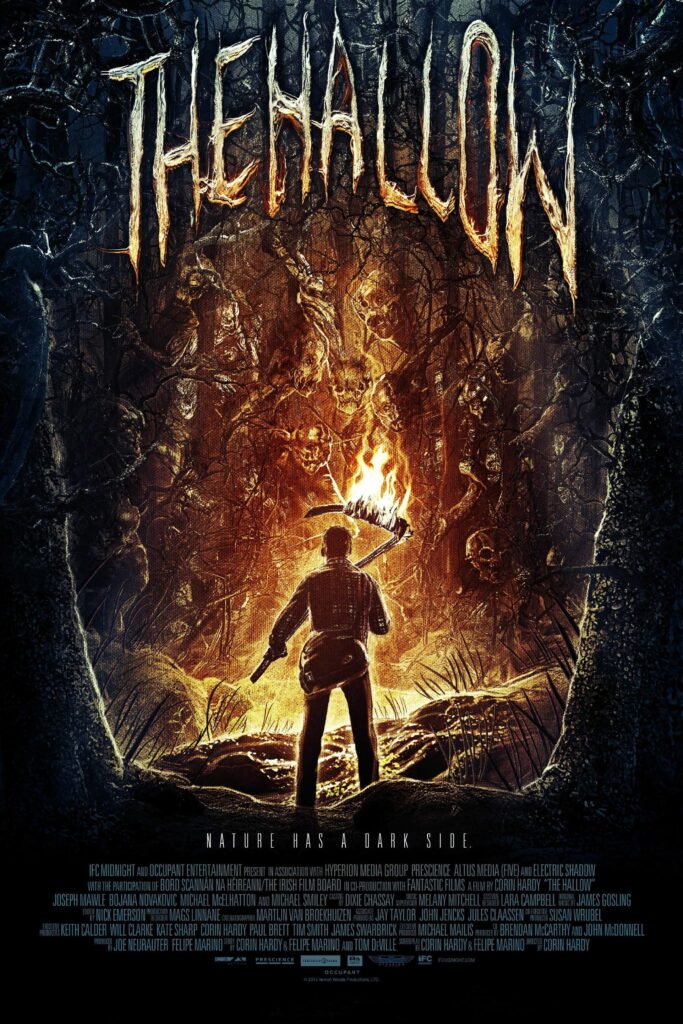
In The Hallow, a couple moves to a remote forest cabin to work on a conservation project, only to find themselves surrounded by supernatural threats tied to the ancient, cursed woods. The isolated setting in a dense, dark forest allows the film to build tension, as the characters are slowly overwhelmed by the sinister forces lurking in the shadows. The supernatural elements are drawn from ancient folklore, with the forest seemingly alive with malevolent spirits and creatures tied to the land’s dark history. The characters’ struggle to survive in the woods is made all the more desperate as they realize they are caught in a place that does not want them to leave.
The film’s growing sense of dread stems from the forest’s overwhelming power over the characters and their realization that they are intruding on a land steeped in evil. As they delve deeper into the forest’s secrets, they are confronted with supernatural forces that seem unstoppable. The rural isolation of the forest only adds to the horror, as the couple’s limited options for escape seem to shrink with every passing moment. The Hallow showcases the creeping terror of folk horror, where the environment itself becomes an antagonistic force, and the characters are drawn into a nightmare from which there is no simple escape.
The Stone Tape (1972)
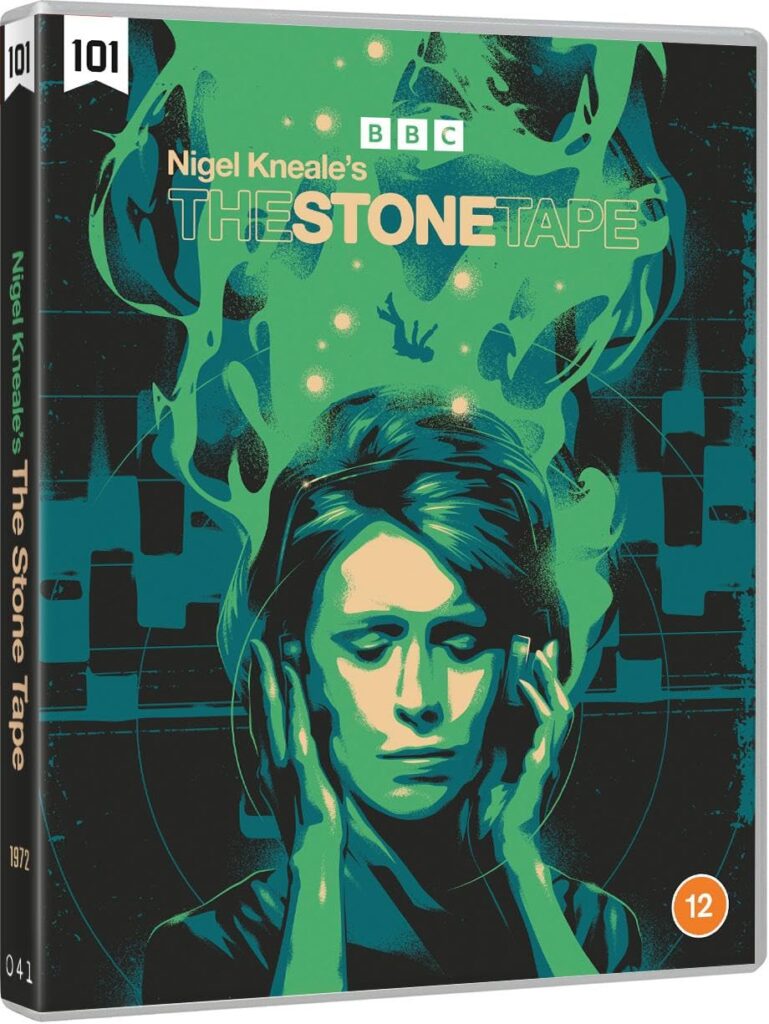
A haunting mix of technology and folklore, The Stone Tape focuses on a team of scientists investigating a haunted building with a history of tragic events. The building, situated in an isolated area, has a dark past tied to an ancient ritual, and the team’s scientific approach to solving the mystery slowly gives way to an overwhelming terror. The film plays with the idea of spirits being trapped in the very fabric of the building, with the stone walls acting as a medium for these otherworldly entities. The combination of the haunted house, the scientific inquiry, and the mysterious pagan rituals creates an unsettling atmosphere where the horror is embedded in the very environment that the characters are studying.
As the scientists uncover more about the building’s past, the horror escalates from psychological tension to full-blown terror. The isolation of the setting amplifies the feeling that there is no escape from the horrors that the building holds within its walls. The Stone Tape uses folk horror themes to explore the connection between the supernatural and the physical world, where the environment becomes a conduit for ancient forces. The growing realization that the supernatural cannot be explained away by science adds a layer of dread, making the location feel as though it is alive with dark energy that will consume anyone who dares to disturb it.
The Burning Moon (1992)
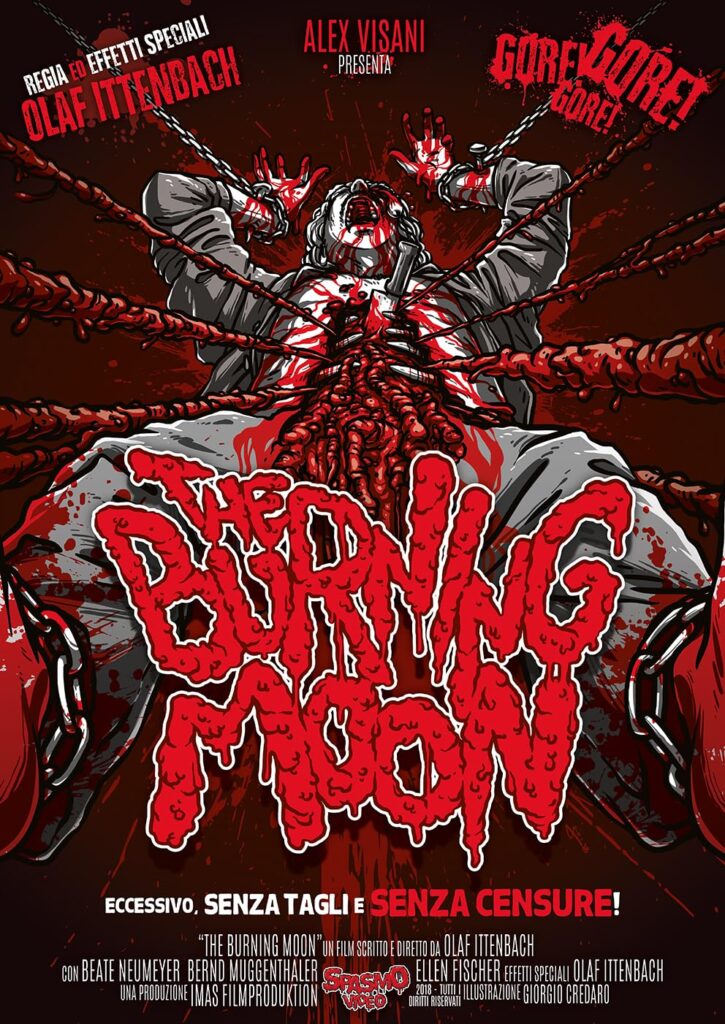
A disturbing and bizarre entry into folk horror, The Burning Moon weaves together dark, surreal stories within the context of a haunted, isolated environment. The film centers on a group of friends who find themselves in an abandoned house, surrounded by stories of ancient evil and occult rituals. The house itself is steeped in a sense of dread, as the characters experience strange, supernatural occurrences tied to the building’s disturbing past. The isolation of the location only intensifies the horror, with the sense that the house is a prison built on ancient, terrifying rituals. As the friends struggle to understand the horrific forces at play, they realize they are being hunted by something that has existed long before they arrived.
The movie’s folk horror elements are steeped in supernatural folklore, with a story that blends ritualistic horror and psychological terror. The atmosphere of isolation is heightened by the house’s eerie, dilapidated condition, which suggests that it has been abandoned for reasons far darker than anyone realizes. The combination of disturbing supernatural forces and ancient pagan rituals creates a sense of helplessness, with the characters trapped in a nightmare that has no escape. The Burning Moon is a perfect example of how folk horror can turn an ordinary setting, like an abandoned house, into an environment filled with supernatural dread and a growing sense of terror.
The Village (2004)
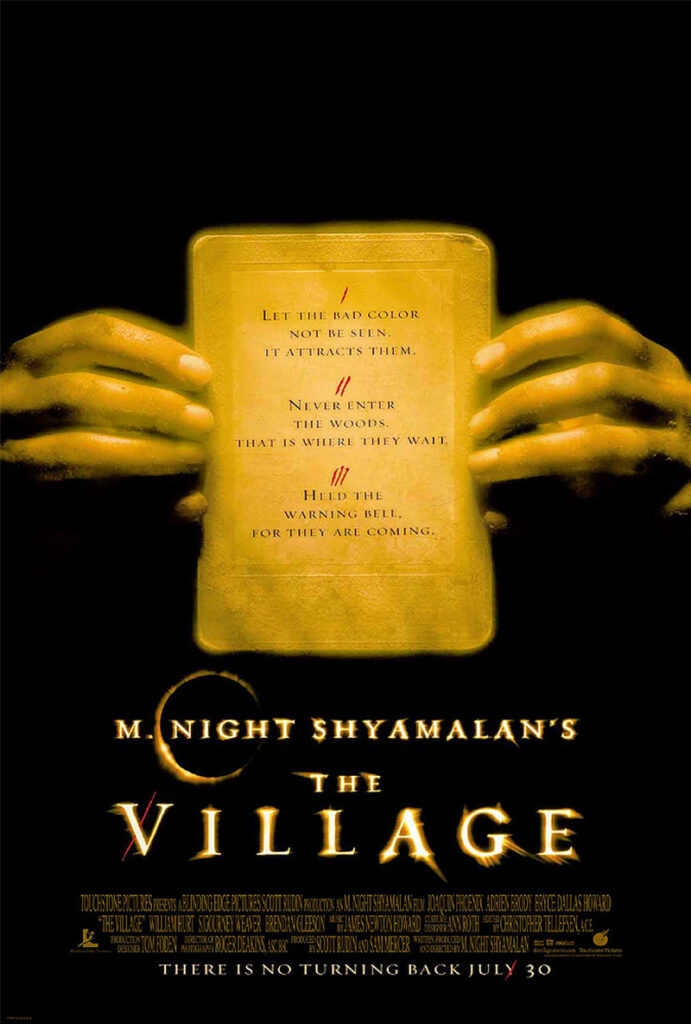
M. Night Shyamalan’s The Village is a slow-burning folk horror film set in an isolated 19th-century village surrounded by a dark forest that the villagers are forbidden to enter. The story revolves around the villagers’ strict adherence to their traditions and the terrifying creatures that supposedly lurk in the woods. The growing sense of unease is driven by the village’s isolation and the characters’ fear of the unknown. As a young woman begins to uncover secrets about the village’s past, she realizes that the creatures in the woods may be a lot closer to home than she thought.
The film plays with themes of isolation, fear of the unknown, and the power of folklore to control a community. The forest, while initially depicted as a source of evil, becomes a place where the truth about the village’s origins and the sinister forces controlling it are finally revealed. The tension builds as the characters, trapped by their fear and the secrets of their past, find themselves at the mercy of the very rituals they’ve been taught to fear. The setting, the isolation, and the growing sense of dread all contribute to the film’s powerful folk horror elements, making it a tense and haunting tale about the dangers of living in fear of the past.
This article originally appeared on Avocadu.
